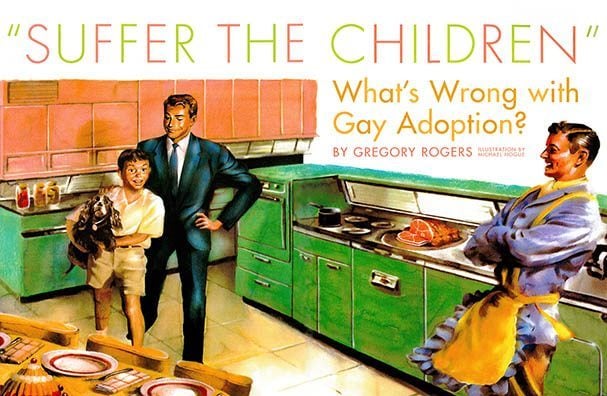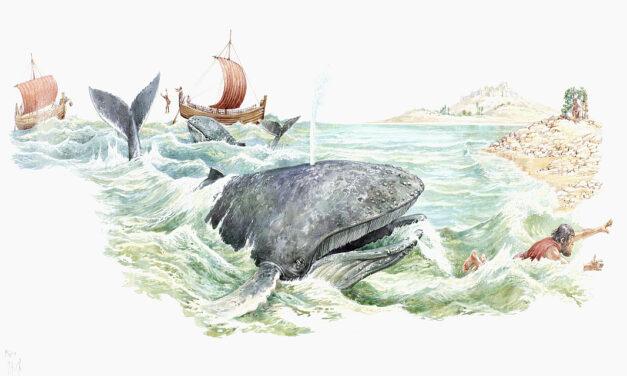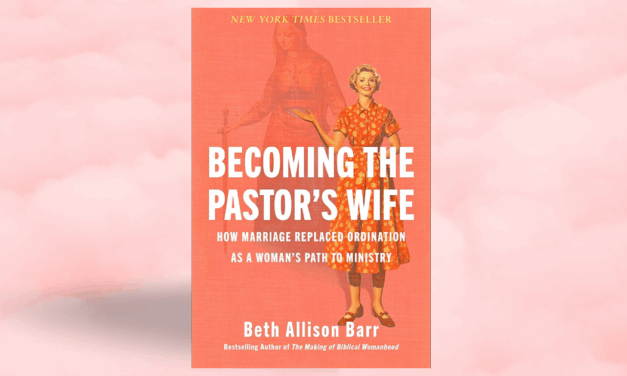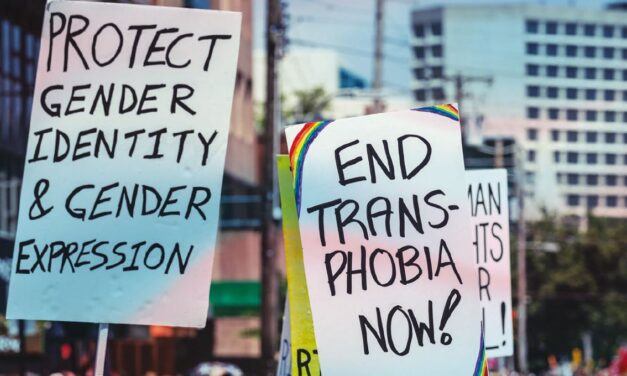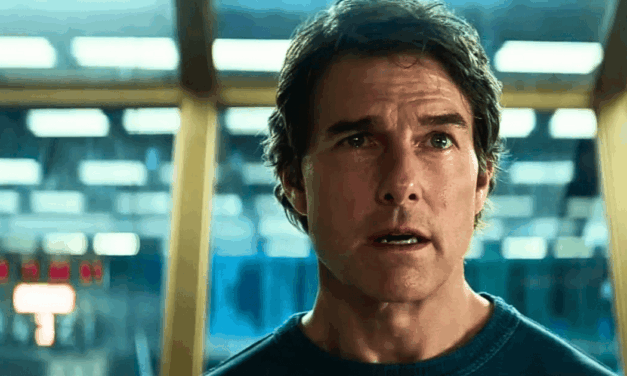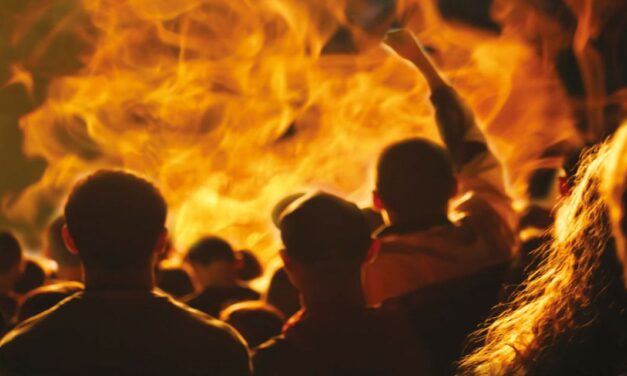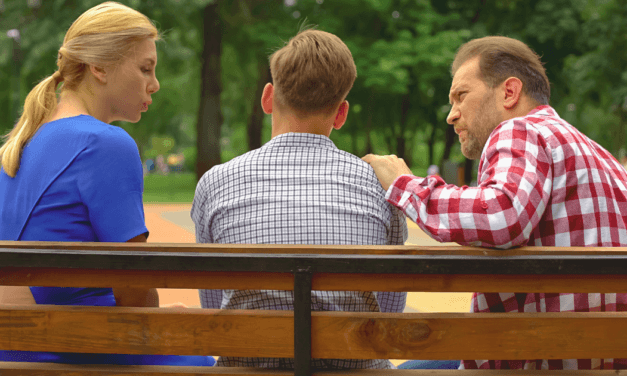This article first appeared in the Christian Research Journal, volume 28, number 2 (2005). For more information about the Christian Research Journal, click here.
SYNOPSIS
The right to legal adoption of children is the latest in a long list of claims that the gay lobby has made since its ascendancy some three to four decades ago. Gay activists argue that gay adoption has the backing and favor not only of modern psychology, but of courts of law. One needs to establish whether gays match the criteria traditionally laid down for adoptive parents, however, in assessing whether they should be allowed to adopt. An examination of the facts reveals that gays as a group have significantly higher levels of promiscuity, suicide, domestic violence, and relational instability. There is also evidence of pedophilia within gay circles, with gay literature freely containing reference to the practice, even deeming it a necessary part of the gay experience. It cannot be ignored that a father-and-mother-based family is the ideal support structure for children. The absence of one or the other parent has a detrimental effect on children. Further, the so-called gay-adoption studies are essentially inconclusive, despite the insistence of the gay lobby and various psychiatric organizations to the contrary. Finally, some studies indicate that gay parenting has a negative impact on children. All things being considered, this question has ramifications not only for society’s children, but also for the foundation of society itself.
We [gay and lesbian activists] have been on the defensive too long. It’s time to affirm that the Right is correct in some of its pronouncements about our movement. Pat Buchanan said there was a “cultural war” going on “for the soul of America” and that gay and lesbian rights were the principal battleground. He was right. Similarly, [homo]’phobes like Pat Robertson are right when they say that we threaten the family, male domination, and the Calvinist ethic of work and grimness that has paralyzed most Americans’ search for pleasure. Indeed, instead of proclaiming our innocuousness, we ought to advertise our potential to change straight society in radical, beneficial ways…Pleasure is possible (and desirable) beyond the sanction of the state.1
—Lesbian activist Donna Minkowitz
It is difficult to avoid the thought that if the above pronouncement had been made some 30 years earlier, public dignity never would have stood for it, and a Western world based on Judeo-Christian principles would have proudly resisted. The gay lobby has made such strides in recent decades as can only be called daunting. Beginning with the claim to right of lifestyle behind closed doors, they have progressed to demanding the consent of society’s doctors regarding sex change operations, of society’s media regarding gay-oriented films and television shows, and of society’s laws regarding same-sex marriage. Finally, they want society’s children.
Legal and political bodies around the world already have sanctioned legal adoption of children by homosexuals. According to some, such decisions rest on reliable scientific evidence and sure ethical foresight. According to others, however, such decisions lack sufficient basis, and those who made them have eschewed the truth for political correctness and the new doctrine of tolerance.
As the controversy moves to crisis point, one may well discover that what is at stake is not merely the welfare of children—though this is serious enough—but the foundation of the Judeo-Christian West itself.
HOW DID WE GET HERE?
Gay activists have been quick to promote their agenda in political and psychiatric circles, bringing pressure to bear on the relevant authorities. Their successes have been few but sure, and popular impression is that they may well achieve victory in this arena before long.
Gay interests received a boost in February 2002, when the American Academy of Pediatrics (AAP) announced that it would support adoption by gays in the future. The decision, however, did not go unchallenged. Many clinicians, including more than 600 members of the AAP, walked out of the Academy in protest.2
In a recent decision, the Eleventh Circuit Court of Appeals upheld the prevailing Florida position against same-sex adoption. The court argued that “the state’s overriding interest is not providing individuals the opportunity to become parents, but rather identifying those individuals whom it deems most capable of parenting adoptive children and providing them with a secure family environment.”3 An increasing number of states have found in favor of gay adoption in the United States, however.
The force of the debate also has been felt elsewhere. In Denmark child custody rights have been awarded to gay couples, with similar rights being granted by Canadian courts.4
It is clear, then, that we are poised on the brink of an unprecedented legal and ethical battle. Only the future will tell what ground the courts and governments of the world may or may not concede to the gay lobby.
GOOD ROLE MODEL?
One of the first questions raised in the matter of adoption pertains to the emotional and psychological well-being of the potential parents. There is a plethora of studies that indicate the extreme emotional and sexual instability of many gays and lesbians in this regard.
According to a recent study of gay relationships reported in the Journal of Sex Research, “The modal range for number of sexual partners ever was 101–500.” Some 10.2 percent to 15.7 percent reported between 501 and 1,000 partners, with a further 10.2 percent to 15.7 percent having had over 1,000 in the course of their lives.5
The stability of gay relationships can also be questioned. Prominent gay activist (and same-sex marriage advocate) Andrew Sullivan speaks glowingly of infidelity in same-sex unions, in that
same-sex unions often incorporate the virtues of friendship more effectively than traditional marriages; and at times, among gay male relationships, the openness of the contract makes it more likely to survive than many heterosexual bonds…there is more likely to be greater understanding of the need for extramarital outlets between two men than between a man and a woman. But something of the gay relationship’s necessary honesty, its flexibility, and its equality could undoubtedly help strengthen and inform many heterosexual bonds.6
Figures for suicidal tendencies are also unacceptably high. A recent study reported in the American Journal of Public Health revealed that gay people are six times more likely to attempt suicide than are straights.7
Worse still, there is evidence of high levels of domestic violence within gay households. Gay authors Island and Letellier admit in their book Men Who Beat the Men Who Love Them: Battered Gay Men and Domestic Violence that “the incidence of domestic violence among gay men is nearly double that in the heterosexual population.”8
One wonders what sort of impact such an environment will have on the mind and emotional well-being of a child. Further, could that child become the recipient of the domestic violence—or even promiscuity—in question?
Some have objected that “gay angst” is due to “societal homophobia,” and that as soon as homosexuality is fully endorsed by society, such emotional problems will dissipate. This, however, cannot be conclusively proven by science, and there is evidence that gay angst in fact has more to do with homosexuality as an innate condition. Research scientist Neil Whitehead reviewed several studies whose evidence indicated that societal attitudes appeared to make no difference, and that gay angst is just as prevalent in liberal gay-tolerant countries as it is elsewhere in the world.9
THE PEDOPHILIA PROBLEM
The connection between homosexuality and pedophilia has long haunted the public consciousness. In response, the gay lobby—as well as important bodies such as the American Psychological Association (APA)—insist that there is no evidence that gays commit pedophilia at a higher rate than do straights.10
The argument runs that, on a hand count, cases of heterosexual pedophilia outnumber those of homosexual pedophilia; however, as Yale and Harvard–connected psychiatrist Jeffrey Satinover points out,
Careful studies show that pedophilia is far more common among homosexuals than heterosexuals. The greater absolute number of heterosexual cases reflects the fact that heterosexual males outnumber homosexual males by approximately thirty-six to one. Heterosexual child molestation cases outnumber homosexual cases by only eleven to one, implying that pedophilia is more than three times more common among homosexuals.11
Space does not permit a deeper treatment of the subject, except to say that subsequent scientific arguments have been proposed elsewhere,12 and that the subject needs more scientific research. What is clear is that the idea that there is no significant link between homosexuality and pedophilia is by no means settled among clinicians, regardless of the official statements of various authoritative bodies.
What is clearer, and needs to be brought to the fore—with some urgency—is that the literature of the gay subculture contains an alarming frequency of open references to pedophilia and child molestation. The Journal of Homosexuality (whose editor, John deCecco, also sits on the editorial board of the pedophilia advocacy journal Paedika)13 ran a double issue in 1990 that was devoted entirely to “male intergenerational intimacy.” As Satinover points out,
This special issue reflects the substantial, influential, and growing segment of the homosexual community that neither hides nor condemns pedophilia. Rather they argue that pedophilia is an acceptable aspect of sexuality, especially of homosexuality. Indeed, the San Francisco Sentinel, a Bay Area gay-activist newspaper, published a piece arguing that pedophilia is central to the male homosexual life (emphasis in original).14
The unabashed international campaigns of the gay lobby to lower the age of sexual consent are also noteworthy. From as early as 1972 the National Coalition of Gay Organizations included among their aims the “repeal of all laws governing the age of sexual consent,”15 in some countries to as low as 14 years.16
The pro-pedophilia strain is unmistakable. One article avers that “each individual case must be looked upon on its own merits…the threat to make all pedophile acts punishable by law can barely be labeled civilized…it implies discrimination and persecution of a minority and should be abolished.”17
In another article Dutch jurist Edward Brongersma—who, interestingly, was jailed for pedophilia at one point (yet later still managed to incur a knighthood from the Dutch queen)—insists that it is possible for social workers to achieve “miracles with apparently incorrigible young delinquents—not by preaching to them but by sleeping with them.” According to Brongersma, pedophiles can offer “companionship, security and protection” that parents cannot. He encourages parents to see the pedophile not as “a rival or competitor, not as a thief of their property, but as a partner in the boy’s upbringing, someone to be welcomed into their home.”18 Another writer expresses his concern that Americans “get over their hysteria about child abuse.”19
Science may not be capable of proving all that is necessary at this point. A further concern is whether current research is influenced by political correctness. At the very least it can be said that the gay lobby has much to explain about the above data before a reasonable society should allow same-sex partners custody of its children.
A BALANCED FAMILY?
One cannot ignore the fact that for a child to develop to emotional and psychological maturity it is preferable that both mother and father be present. Each party makes a different but vital contribution to that child’s welfare.
According to researcher Henry Biller, “Differences between the mother and father can be very stimulating to the infant, even those that might appear quite superficial to the adult. Even if the father and mother behave in generally similar ways, they provide contrasting images for the infant.”20
Sociologist David Popenoe observes,
Through their play, as well as in their other child-rearing activities, fathers tend to stress competition, challenge, initiative, risk taking, and independence. Mothers in their care-taking roles, in contrast, stress emotional security and personal safety….While mothers provide…important flexibility and sympathy in their discipline, fathers provide ultimate predictability and consistency. Both dimensions are critical for…efficient, balanced, and humane child-rearing.21
Studies have shown that fatherless children are twice as likely to become school dropouts, are significantly more likely to become victims of alcohol and drug abuse,22 and are 4.3 times more likely to smoke than children growing up with fathers.23 Few studies have been conducted on motherless homes, presumably because of their sparsity, but one study indicates that motherless homes are 56 percent more likely to produce daughters who experience teen pregnancy.24
Nor can it be argued that the statistics relate to single parents in general rather than to an absent father or mother situation as such. The fact (as demonstrated above) is that both father and mother play a pivotal role in the child’s development, with both needed to provide balanced upbringing. Absence of either will many times result in confusion and identity malformation. This is the case in any single-gender parent family, whether gay or straight. Further, single-parent families in society are widely regarded as second best, evolving out of necessity rather than the ideal option. As long as we keep our eyes on this we have a balanced perspective. What the gay argument actually does is insist that we accept single-gender gay parenting as “just another healthy alternative,” when this is not the case.
DO GAYS MAKE BETTER PARENTS?
Contrary to the expectations of many, since their inception, circa 1970, gay-parenting studies have been almost unanimous in their official findings that there are “no notable differences between children reared by heterosexual parents and those reared by lesbian and gay parents,” and in finding lesbian and gay parents “to be as competent and effective as heterosexual parents.”25
Social science researchers Robert Lerner and Althea Nagai, however, produced a 2001 survey that challenged the above contention. The work, entitled No Basis: What the Studies Don’t Tell Us about Same-Sex Parenting, surveyed 49 of the most prominent studies conducted to date, dismissing all without exception as of limited use at best.
According to Lerner and Nagai, “the methods used in these studies are so flawed that these studies prove nothing. Therefore, they should not be used in legal cases to make any argument about ‘homosexual vs. heterosexual’ parenting. Their claims have no basis.”26
Their work postulated several basic traits of a good survey, and demonstrated how all 49 hopelessly failed to match these criteria. Of the 49, it accused 18 of “undue partiality,”27 and found 21 not to have a “heterosexual comparison group” with which to compare the homosexual group in question, making confident comparison difficult.28
It criticized a 1995 study by clinicians Tasker and Golombok for having a “ridiculously small” sample size,29 for instance, and dismissed the findings in Patterson’s 1994 study of lesbian mothers as “not valid.”30 (Notably, in one case where Patterson was asked to testify, the judge referred to her evidence as “questionable.”)31
Steven Nock, professor of sociology at the University of Virginia, also noted in a review of the studies that, among other errors, “all used inappropriate statistics….All had biased samples.”32 He added that the research is inconclusive, insufficient to justify any pronouncements, and “does not constitute a solid body of scientific evidence.”33
Despite official pronouncements to the contrary, there does exist evidence that same-sex parenting is harmful to children. Much of this may be drawn, ironically, from the studies examined above that purport to prove the opposite.
The American Sociological Review published a survey by researchers Stacey and Biblarz in 2001 (cited in note 4) in which the authors reviewed 21 gay-adoption studies carried out between 1981 and 1998. They concluded that in many cases the conductors of those studies were guilty of bias, and of deliberately withholding information regarding factors that would indicate precisely the opposite of the results originally claimed.
Stacey and Biblarz are in favor of gay rights and even criticize key conservative figures.34 Despite personal feelings, then, they still exposed the bias inherent in many of these studies. Stacey said of the studies, which had found that the children raised in gay homes did not differ from those raised in normal homes, “That doesn’t appear to be true. It’s time to…look at it with eyes wide open.” She also noted that “we say there are some differences, and that people have shied away from acknowledging them for fear that this would inflame homophobia.”35
Stacey and Biblarz are not alone in their misgivings. In 2002 the Christian Institute in Britain published the work Children as Trophies, which examined 144 gay-adoption studies, thus making it the largest such survey in Europe. The survey concluded that gays actually make worse parents than heterosexuals.36
A case in point is Jakii Edwards, who was placed in the care of a lesbian foster mother at an early age. According to Jakii, “She would put my brother and I in the same bed with her and her lover, and she would get in the bed and they would make love right there in the bed with my brother and I in there…The pain that I dealt with was tremendous, and affected me for a long time. I hated lesbians for a long time, because I felt that all lesbians represented my mother to me.”37
At the end of the day, therefore, gay-parenting studies should be deemed limited at best; they are far from conclusive by modern science’s rigid standards and in need of further work. What this means at the very least is that we should not use such studies as a basis for making legal decisions. This automatically raises the question as to why they have been so influential in the past, and points once again to the hand of political correctness.
SOME OBJECTIONS
In response to the above, an APA publication argues, “In the long run, it is not the results obtained from any one specific sample, but the accumulation of findings from many different samples that will be most meaningful.”38 What this is actually saying, however, is that we should be prepared to risk the safety and well-being of our children for the sake of inconclusive, and much misrepresented, research, a factor doubtless influenced by the presence of gay clinicians, as well as a politically correct mindset.
Many governments of the world have condemned human cloning, by comparison, because of, among other things, potentially detrimental emotional and psychological consequences for those who would be cloned. If we can prohibit cloning with no prior studies conducted on clone subjects, based simply on common sense and fear of what might happen, how much more should we refrain from experimenting on our children, for fear of similar consequences? No run of inadequate studies will make up for the lives that would be damaged if we are wrong.
Some people may raise the objection that because the tests are inconclusive, reliable studies need to be conducted as soon as possible. One then can counter by inquiring as to whose children we are to use as guinea pigs. We are dealing with a group in which gross promiscuity, pedophilia, AIDS, suicide, and instability are known factors. The suggestion appears to be one more likely entertained in a barbarous rather than a civilized culture.
Others may raise the further point that gay adoption can do much to alleviate the substantial orphan problem, not only in America, but in the rest of the world, and that same-sex couples can serve to increase the number of prospective parents for those orphans. The most reliable recent figures, however, place the occurrence of homosexuality in society at around two percent.39 Taking into account, moreover, that not all gays are going to adopt, and that even fewer would probably be judged fit parents, the number of orphans who would be cared for seems fairly negligible.
It is important to recognize, further, that the highest good, or the child’s best interest, is not necessarily having parents, but having well-being itself. The two do not necessarily amount to the same thing. We would be loathe, for example, to grant a child to a known pedophile simply for the sake of supplying a parent figure. In light of the aforementioned data, we must face the very real possibility that having children growing up in same-sex homes may exacerbate rather than resolve the problem. To put it another way: adoption does not solve all ills. There are cases in which the lesser of two evils is for the child to have no parent. There exists the very real possibility that gay parenthood may in fact add to, and not detract from, the angst of the orphan.
The conservative position will doubtless be accused of intolerance and discrimination. In response, one may inquire: intolerant of and discriminatory against whom, the gay parents or the children?
As the Eleventh Circuit Court pointed out in their recent decision supporting the Florida ban on gay adoption, “In Florida, adoption is not a right, but a statutory privilege.”40 Those who cry “rights” demonstrate a failure of priorities—and therefore of the requisite sense of responsibility in this matter. As the former British Home Secretary Jack Straw points out, “We should not see children as trophies.”41
This brings us to the next important point. Adoption of children has been touted as a gay rights issue, and even, in a recent case involving adoption by lesbians, a women’s rights issue. This, however, misses the point entirely. When we come to the matter of adoption of children, it is always first and foremost a children’s rights issue. In the frantic cry for “rights” over privilege, the rights of the children often do not seem to be considered.
To meet a further objection, is it to be said, then, that all gays would make poor parents? No. As law professor Lynn Wardle argues, the assertion that
same-sex couples “can and do” provide nurturing parenting misses the point. Polygamous parents, incestuous parents, and immature adolescents “can and do” provide nurturing parenting also. (For that matter, child molesters, child beaters, and child murderers “can and do” sometimes provide safe and adequate parenting for some children.) But society’s view of the welfare and interests of society and of children leads us to draw conclusions from the overall, general picture, not from the exceptions.42
“SUFFER THE CHILDREN”
With the failings—and bias—of gay-parenting studies, we have to conclude that we simply do not have sufficient scientific basis to condone gay adoption. We do have sufficient basis, however, to determine that gays are far too volatile and unstable as a group for society to justify risking the safety of its children. Consider the group’s significantly higher rates of suicidal tendency, promiscuity, pedophilia, and domestic violence. This does not even touch the possible negative impact children may suffer simply from having two parents of the same sex. Is society really willing to risk its fragile children for the sake of politics?
What is being proposed by the gay lobby is not just another single-parent family or adoption situation, but an all-new family unit, consisting of a mother-and-mother with children or a father-and-father with children. This is something the likes of which the Judeo-Christian ethic has not heard, nor has the West, which rests on this ethic. The family is the building block of society. When the building block of society falls, society falls with it. What is under threat here is not simply the well-being of children—which is important enough—it is the fabric of Western society itself.
A choice is set before us, that of sacrificing to the gods of political correctness, or of considering the most innocent and fragile members of our society. If we choose the former, it is the children who will be that sacrifice. It was the point in history when the ancient Hebrews began sacrificing their innocent children to the god Molech that marked the onset of the greatest tribulation their nation had known, culminating in devastation and exile (Jer. 32:35). If we are to follow that same way, then God help us. May we indeed allow or “suffer the children” to come unto Him (Matt. 19:14) by keeping their lives as free as possible of unwholesome influences.
NOTES
- Donna Minkowitz, “Recruit, Recruit, Recruit!” The Advocate, December 29, 1992, cited in Anton N. Marco, “Gay ‘Marriage’?” National Association for Research and Therapy of Homosexuality, http://www.narth.com/docs/ marco.html.
- Press Release, “Focus on the Family Gives the Facts on Gay Adoption: Pro-Family Organization Reaffirms the Importance of the Traditional Family,” March 19, 2002, Family.org, http://www.family.org/welcome/press/ a0020031.cfm.
- Bill Murray, “‘For the Sake of the Children,’ The Eleventh Circuit Upholds Florida’s Gay Adoption Ban,” Family Research Council, http://www.frc.org/get.cfm?i=PV04B01.
- Judith Stacey and Timothy J. Biblarz, “How Does the Sexual Orientation of Children Matter?” American Sociological Review 66 (April 2001): 159.
- Paul Van de Ven, Pamela Rodden, June Crawford, and Susan Kippax, “A Comparative Demographic and Sexual Profile of Older Homosexually Active Men,” Journal of Sex Research 34 (1997): 354, cited in Timothy J. Dailey, “Homosexual Parenting: Placing Children at Risk,” Insight 238, Family Research Council, http://www.frc.org/get/ is01j3.cfm.
- Andrew Sullivan, Virtually Normal (New York: Alfred Knopf, 1995), 202, cited in Dale O’Leary, “One Out of Two: AIDS and Sexually Transmitted Diseases among Men Who Have Sex with Men: A Review of the Literature,” Fathers for Life, http://www.fathersforlife.org/ dale/aids4.html#MONOGAMY.
- Gary Remafedi, Simone French, Mary Story, Michael D. Resnick, and Robert Blum, “The Relationship Between Suicide Risk and Sexual Orientation: Results of a Population-Based Study,” American Journal of Public Health 88 (1998): 57–60, cited in Neil E. Whitehead, “Homosexuality and Mental Health Problems,” National Association for Research and Therapy of Homosexuality, http:// www.narth.com/docs/whitehead.html.
- David Island and Patrick Letellier, Men Who Beat the Men Who Love Them: Battered Gay Men and Domestic Violence (New York: Haworth Press, 1991), 14, cited in Dailey.
- Whitehead.
- American Psychological Association, “Answers to Your Questions about Sexual Orientation and Homosexuality: Can Lesbians, Gay Men, and Bisexuals Be Good Parents?” Public Affairs, APA Online, http://www.apa.org/pubinfo/answers.html#goodparents.
- Jeffrey Satinover, Homosexuality and the Politics of Truth (Grand Rapids: Baker Book House, 1996), 64–65.
- See, e.g., Timothy J. Dailey, “Homosexuality and Child Sexual Abuse,” Insight 247, Family Research Council, http://www.frc.org/get/is02e3.cfm.
- Satinover, 63.
- Ibid.
- Frank V. York and Robert H. Knight, Homosexual Activists Work to Lower the Age of Sexual Consent (Washington, DC: Family Research Council, 2001), 3.
- Ibid., 4.
- Gunter Schmidt, “Foreword: The Debate on Pedophilia,” Journal of Homosexuality 20, 1/2 (1990), cited in “Pedophiles Argue Their Case in the Journal of Homosexuality,” National Association for Research and Therapy of Homosexuality, http://www.narth.com/docs/ arguecase.html.
- Edward Brongersma, “Boy-Lovers and Their Influence on Boys,” Journal of Homosexuality 20, 1/2 (1990) cited in “Pedophiles Argue Their Case in the Journal of Homosexuality,” National Association for Research and Therapy of Homosexuality, http://www.narth.com/docs/ arguecase.html.
- Unnamed, Journal of Homosexuality 20, 1/2 (1990), cited in “The Problem of Pedophilia,” National Association for Research and Therapy of Homosexuality, http:// www.narth.com/docs/pedophNEW.html.
- Henry Biller, Fathers and Families: Paternal Factors in Child Development (Westport, CT: Auburn House, 1990), 12, 15, cited in Dale O’Leary, “Is This Diversity, Or Tragedy? Children as Victims of their Parents’ Choices,” National Association for Research and Therapy of Homosexuality, http://www.narth.com/docs/diversity.html.
- David Popenoe, Life without Father (Cambridge: Harvard University Press, 1996), 144, 146, cited in Timothy J. Dailey, “Homosexual Parenting: Placing Children at Risk,” Insight 238, Family Research Council, http://www.frc.org/get.cfm?i=IS01J3.
- Survey on Child Health (Washington, DC: U.S. Department of Health and Human Services. National Center for Health Statistics, 1993), cited in Facts about Fathers and Fathering, C: The Consequences of Fatherlessness, fathers.com, http://www.fathers.com/research/ consequences.html.
- Warren R. Stanton, Tian P.S. Oci, and Phil A. Silva, “Sociodemographic Characteristics of Adolescent Smokers,” The International Journal of the Addictions 7 (1994): 913–25, cited in ibid.
- Llad Phillips and William S. Comanor, n.p., n.d., cited in Press Release, “Study Finds Teen Pregnancy and Crime Levels Are Higher among Kids from Fatherless Homes,” October 11, 1996, University of California, Santa Barbara, at Americans for Divorce Reform, http://patriot.net/ ~crouch/adc/jds.html.
- Stacey and Biblarz, 160.
- Robert Lerner and Althea K. Nagai, No Basis: What the Studies Don’t Tell Us about Same-Sex Parenting (Washington, DC: Marriage Law Project, 2001), 6.
- Ibid., 5, 16.
- Ibid., 27–28.
- Ibid., 51.
- Ibid., 48.
- Ibid., 127.
- Steven L. Nock, Affidavit for Halpern et al., v. The Attorney General of Canada, cited in Glenn T. Stanton, “Examining the Research Literature on Outcomes from Same-Sex Parenting,” Citizen Link, Family.org, http:// www.family.org/cforum/pdfs/fosi/marriage/examining_research_on_ss_parenting.pdf.
- Ibid.
- Stacey and Biblarz, 161–64.
- David Crary, “New Report Takes Look at Children of Gay Parents,” North County Times, June 17, 2001, http:// www.nctimes.com/articles/2001/06/17/export12048.txt.
- Mike Judge, “Institute Publishes Europe’s Biggest Review of Gay Parenting Research,” Institute Update 2 (May 2002), The Christian Institute, http://www.christian.org.uk/ Update Magazines/Update 2/art31.htm.
- Pete Winn, “Rosie’s War,” CitizenLink, Family.org, http://www.family.org/cforum/feature/a0019995.cfm.
- Charlotte J. Patterson, “Lesbian and Gay Parenting: A Resource for Psychologists,” Public Interest, APA Online, http://www.apa.org/pi/parent.html.
- See, e.g., the 1991 study conducted by the Battelle Human Affairs Research Centers, which revealed a figure of 1.1 percent, reported in Priscilla Painton, “The Shrinking Ten Percent,” Time, April 26, 1993, 43–45.
- Murray.
- News Release, “Blair’s Gay Adoption Plans Will Harm Children,” May 7, 2002, The Christian Institute, http://www.christian.org.uk/pressreleases/2002/may_ 7_2002.htm.
- Lynn D. Wardle, “Same-Sex Marriage: The Ruling in Baehr v. Miike,” NLA Review (Winter 1996), National Lawyers Association, http://www.nla.org/library/winter96/ pg5.html.
